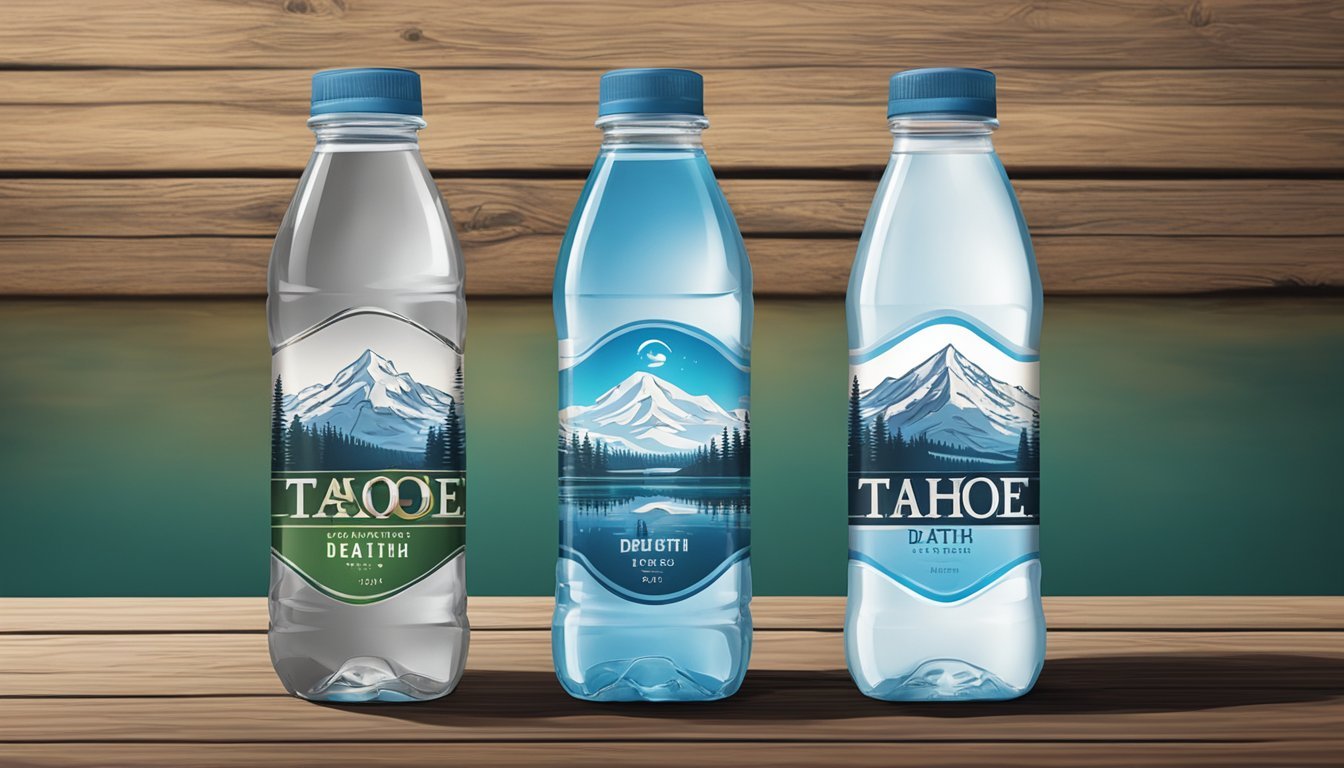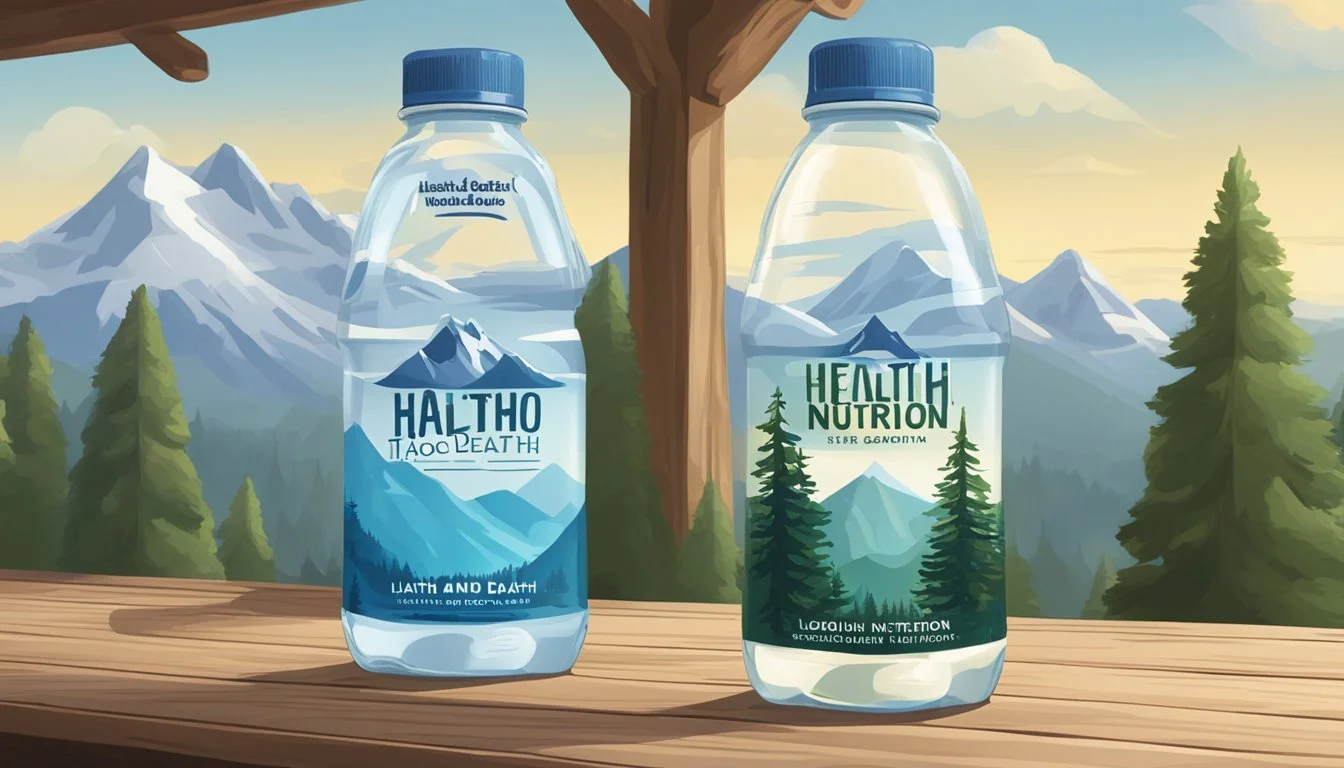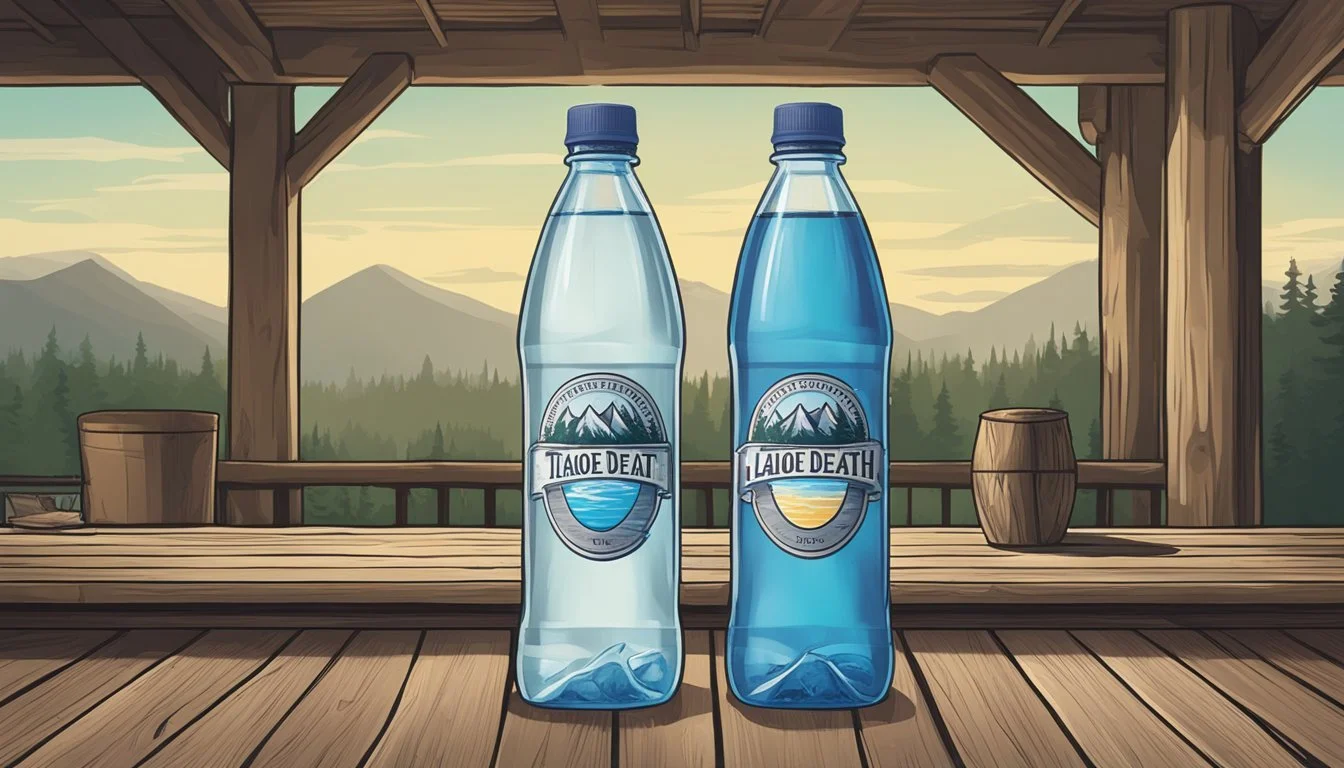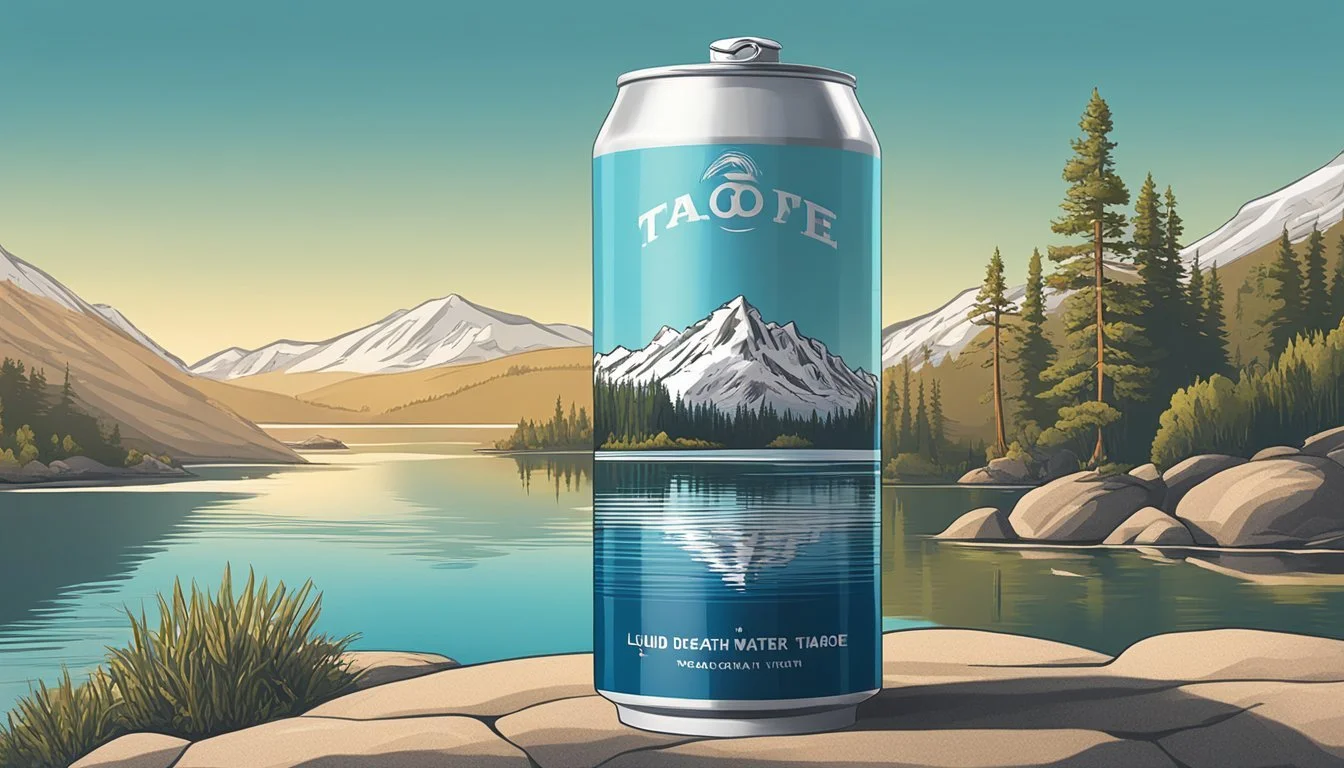Tahoe vs. Liquid Death
Comparing Bottled Water Quality and Taste
When it comes to choosing between Tahoe and Liquid Death bottled water, discerning consumers often look for quality, taste, and overall experience. Both brands have their unique characteristics which set them apart in the competitive bottled water industry.
Tahoe offers clean, crisp spring water that is known for its purity and refreshing qualities. It’s a top pick for those who prefer traditional, uncarbonated water. On the other hand, Liquid Death provides an edgy alternative with its aluminum canned water available in both sparkling and flat varieties. Liquid Death stands out not only for its distinct packaging but also for its commitment to sustainability by reducing plastic waste.
Whether you prioritize the mineral content of Tahoe or the eco-friendly packaging of Liquid Death, it's clear both brands bring something unique to the table. This blog post will dive deeper into these preferences to help you decide which bottled water is better for your lifestyle.
Understanding Bottled Water
Bottled water comes in various forms, each with its unique characteristics. Key points include the journey from source to shelf and the differences between sparkling and still water.
From Source to Shelf: The Journey of Bottled Water
Bottled water's journey begins at its source, which can be a natural spring, mountain, or a municipal supply. Water from natural springs and mountains is bottled with minimal filtration, preserving its natural mineral content.
After extraction, water undergoes filtration to remove impurities. Types of filtration include sand filtration and activated carbon filtration.
Once filtered, water is packaged, often in plastic or aluminum containers, and then distributed to retailers. Brands like Liquid Death use aluminum packaging for its eco-friendliness, while others use plastic.
Types of Bottled Water: Sparkling and Still
Still water includes spring water, mountain water, and filtered tap water. Spring and mountain waters are valued for their natural minerals and minimal processing. Filtered tap water undergoes treatments like reverse osmosis to ensure purity.
Sparkling water, like Liquid Death’s sparkling variation, is carbonated by adding carbon dioxide. This creates a fizzy sensation that differentiates it from still water.
Flavored sparkling water is also available, with natural flavors added to enhance taste without additional calories or sugars. This variety is often preferred for its refreshing qualities.
Liquid Death Brand Overview
Liquid Death is a unique player in the bottled water market, recognized for its provocative branding and commitment to environmental sustainability. The brand offers a variety of water products available in prominent retail stores and online platforms.
Brand Ethos and Messaging
Liquid Death's ethos is encapsulated by its tagline "Murder Your Thirst." This edgy slogan appeals to a younger demographic seeking a rebellious twist to their hydration routine. Not just a marketing gimmick, the brand leverages social media platforms like Instagram to engage and grow a community around its environmentally-friendly mission.
Their mission includes reducing plastic waste. Liquid Death's water comes in aluminum cans, which are made from 70% recycled materials. Aluminum is a more sustainable option compared to plastic bottles, as it is infinitely recyclable without losing quality.
Product Range and Offerings
Liquid Death offers both sparkling and still water sourced from the Austrian Alps. Consumers can purchase these through various channels, including Amazon, Whole Foods, and Target. The product lineup includes options like:
Single cans for individual enjoyment.
Six-packs for convenient bulk purchasing.
The emphasis is on quality and sustainability. Each can is priced competitively at around $1.69, making it an accessible premium option for consumers.
Liquid Death also engages in creative packaging and partnerships that resonate with environmentally conscious buyers. They often collaborate for special editions and campaigns aimed at emphasizing their environmental message.
Tahoe Bottled Water Analysis
Tahoe Bottled Water is known for its source and quality. It is an artesian water brand that attracts those seeking clean and pure hydration.
Tahoe’s Market Presence and Reputation
Tahoe bottled water is sourced from the Wells Aquifer in Soda Springs, California. Notable for its natural alkalinity, the water is drawn from a protected artesian aquifer situated high in the Sierra Nevada Mountains.
It comes in both still and sparkling variants, satisfying different consumer preferences. Tahoe Artesian stands out for its sustainability, with eco-friendly sourcing practices.
Its reputation for crisp, clean, and low-mineral water makes it favored among health-conscious individuals. Consumers can purchase Tahoe bottled water at premium outlets or directly from high-end retailers. The brand upholds a strong market presence, bolstered by its commitment to quality and sustainable practices.
Environmental Impact and Sustainability
When comparing the environmental impact and sustainability of Lake Tahoe water and Liquid Death, several key factors must be considered. We will focus on the materials used for bottling, waste management practices, and the footprint of water extraction.
Plastic Bottles vs. Aluminum Cans
Plastic Bottles:
Plastic bottles, commonly used for traditional bottled water like those from Lake Tahoe, pose significant environmental challenges. Plastic production involves petroleum, contributing to carbon emissions. Moreover, plastic bottles are less frequently recycled, which leads to higher pollution rates.
Aluminum Cans:
Liquid Death uses aluminum cans, which are often cited as more environmentally friendly. Aluminum is lighter, reducing the carbon footprint during transportation. Importantly, aluminum cans boast a higher recycling rate compared to plastic bottles, thus lowering potential waste.
Recycling and Waste Management Practices
Plastic Bottles:
Recycling plastic is less efficient, with only about 9% of plastic waste being recycled globally. Mismanaged plastic waste often ends up in oceans and natural habitats, posing a threat to wildlife. Additionally, the degradation process for plastic can release harmful microplastics into the environment.
Aluminum Cans:
Aluminum cans are 100% recyclable, and they can be recycled indefinitely without losing quality. High recycling rates for aluminum reduce the amount of waste generated. Moreover, recycling aluminum uses significantly less energy compared to producing new cans.
The Footprint of Water Extraction
Lake Tahoe Water:
Extracting water from Lake Tahoe involves relatively minimal industrial processing, potentially resulting in a smaller carbon footprint. However, environmental regulations are crucial to ensure sustainable water levels and that the surrounding ecosystem remains protected.
Liquid Death:
Liquid Death sources its water from mountain springs. The brand focuses on using sustainable practices for water extraction, ensuring that natural water sources are not depleted. Despite this, the transportation of canned water can still contribute to carbon emissions.
Evaluating the environmental impact and sustainability requires an analysis of each product's complete lifecycle, from extraction to disposal. Both bottled water types have different implications for the environment, influenced by their packaging and sustainability practices.
Health and Nutrition
When comparing Tahoe and Liquid Death bottled waters, it is pivotal to examine aspects such as hydration quality, mineral content, and any added ingredients. The health benefits and potential drawbacks of these factors play a significant role in choosing the better option.
Hydration and Mineral Content
Hydration is the primary purpose of drinking water. Both Tahoe and Liquid Death deliver on this essential function, but their mineral content differs slightly.
Tahoe sources its water from pristine mountain springs, potentially resulting in a higher mineral content, including essential electrolytes like calcium and magnesium.
Liquid Death, available as both still and sparkling, emphasizes its use of aluminum cans instead of plastic, which is crucial for the environmentally conscious consumer.
The mineral content in Liquid Death is typically lower, but the presence of carbonation in the sparkling variety can make it feel more refreshing.
Considerations for Water Consumption
The choice between Tahoe and Liquid Death might come down to individual dietary and consumption preferences.
While both brands offer hydration with zero calories, Liquid Death provides a unique advantage through its sparkling variant that contains natural flavors without added sugars. This can be appealing for those looking to avoid sugary beverages while still enjoying a flavored drink.
Tahoe offers a more straightforward, possibly less processed option due to its naturally sourced spring water. Consumers focused on minimizing their intake of any processed ingredients might lean toward Tahoe.
Pros and Cons of Added Ingredients
Liquid Death sparkling water includes carbonation and sometimes natural flavors. These added ingredients have their pros and cons.
Pros:
Carbonation can make water more palatable and enjoyable to drink.
Natural flavors provide variety without adding calories.
Cons:
Some individuals may be sensitive to carbonation, which can cause bloating or gas.
Natural flavors, albeit natural, are still added elements that some purists might prefer to avoid.
Tahoe, by contrast, offers minimal added ingredients, catering to those who want their water as close to its natural state as possible.
This simplicity can be a significant advantage for health-conscious consumers seeking purity in their hydration choice.
Packaging and Design
When comparing Tahoe and Liquid Death, both brands have taken unique approaches to packaging and design, differentiating themselves through materials, aesthetics, and consumer appeal.
Visual Appeal and Marketing Strategies
Liquid Death is packaged in sleek aluminum cans with a distinct punk aesthetic. This edgy design serves as a visual contrast to its pure product, making it stand out on shelves. The use of eye-catching graphics and bold fonts reinforces its brand identity, targeting a younger, eco-conscious demographic.
Tahoe opts for a more conventional plastic bottle but incorporates elegant design elements. The bottle often features crystal-clear plastic, which highlights the purity of the water. Tahoe's branding focuses on a clean, premium look, aiming to attract a broad consumer base.
Functionality and Consumer Convenience
Aluminum cans used by Liquid Death are highly recyclable, contributing to an eco-friendlier footprint. The cans are also lightweight and easy to stack, making them convenient for storage and transport. Moreover, aluminum cans are renowned for their ability to keep water cooler for longer periods.
Tahoe’s plastic bottles are designed for convenience as well, featuring ergonomic shapes and secure caps. These bottles are flexible and resilient, suitable for on-the-go consumption. Despite their convenience, plastic bottles are often criticized due to environmental concerns, although some are made from recycled materials.
Each brand's focus on packaging materials, design, and functionality showcases different strategies to capture consumer interest and address ecological impacts.
Taste Profile and Palatability
Tahoe and Liquid Death provide distinct experiences for the taste buds, influenced by factors like mineral content and additional flavorings. Tahoe offers a more natural mineral taste, while Liquid Death capitalizes on both its still and sparkling varieties to offer different sensations.
Sparkling vs. Still Water Taste Comparison
Tahoe still water has a subtle mineral profile. The calcium, magnesium, and sodium add a touch of complexity without overwhelming the palate. It is known for its clean, almost silky mouthfeel.
Liquid Death offers both still and sparkling options. The still water from Liquid Death is crisp and pure, offering a straightforward hydration experience. Their sparkling water, on the other hand, brings a sharper, effervescent quality that appeals to those who enjoy a bit of fizz.
The Role of Carbonation and Flavorings
Carbonation plays a significant role in Liquid Death's sparkling water. The effervescence enhances the tactile experience, making it feel more refreshing, especially on a hot day.
Flavors such as Mango Chainsaw add another layer. The mild sweetness from agave in Liquid Death's flavored options delivers a balanced taste that doesn't feel artificial. Tahoe, emphasizing its natural purity, sticks to its unaltered mineral flavor, appealing to purists.
Both brands offer unique drinking experiences catering to different preferences, whether one seeks the simplicity of still water or the excitement of flavored, fizzy options.
Consumer Preferences and Trends
Consumer choices between Tahoe and Liquid Death are shaped by the market presence of these brands and their cultural resonance, particularly through social media platforms.
Market Analysis of Popular Water Brands
The bottled water market features many players, including Tahoe and Liquid Death, each vying for consumer attention. The expansive growth of the industry from 2010 to 2020 indicates a rising demand driven by health trends. Brands such as Fiji, Essentia, and Voss are recognized for their premium positioning.
Tahoe caters to individuals who prioritize purity and a clean taste. Liquid Death, on the other hand, stands out with its edgy branding and focus on eco-friendly packaging. Sparkling options like San Pellegrino and Topo Chico diversify consumer choices, appealing to those who enjoy carbonated beverages. Analyzing sales data from these brands provides insight into evolving consumer preferences toward bottled water, whether still or sparkling.
Cultural Impact and Social Media Influence
The distinctive branding of Liquid Death has seen significant traction on platforms like TikTok and Instagram, appealing to younger demographics. Social media campaigns leverage humor and a rebellious image, differentiating it from more traditional waters like Tahoe.
Influencers play a critical role in shaping public perception. Endorsements from lifestyle and fitness influencers have bolstered the popularity of Smartwater and La Croix, often seen as trendy choices. Tahoe's clean, natural image contrasts with Liquid Death's bold marketing, catering to diverse consumer niches.
Brand sentiment analysis shows that Liquid Death thrives on its cultural relevance and viral content, while Tahoe benefits from a reputation rooted in simplicity and purity, appealing to health-conscious consumers. Both brands reflect shifting trends in how bottled water is consumed and perceived by different segments.
Cost Analysis
When evaluating Tahoe and Liquid Death bottled water, understanding the price differences at various retailers is crucial. Both brands are available across major platforms such as Amazon, Whole Foods, and Target.
Comparing Price Points Across Brands
Liquid Death offers both sparkling and flat water in aluminum cans, hailed for their eco-friendliness. On Amazon, a 12-pack of Liquid Death is priced around $15.99, which equates to roughly $1.33 per can.
Key Retailers and Prices:
Target: ~$1.62 per can (Mountain Water)
Whole Foods: Competitive pricing similar to Target
Tahoe Water's pricing is relatively more variable. At Whole Foods, a 24-pack of Tahoe Natural Spring Water typically sells for around $26.00, making it about $1.08 per bottle.
Key Retailers and Prices:
Amazon: Usually slightly cheaper, varies by seller
Drugstores: Often increases by convenience
In summary, Liquid Death generally costs more per unit than Tahoe when bought in bulk from major retailers. This disparity in price may influence consumers seeking cost-effective options.
Alternatives to Bottled and Canned Water
Considering alternatives to bottled and canned water can lead to cost savings, environmental benefits, and convenience. Each option has its own advantages and potential drawbacks to consider.
Tap Water: Pros and Cons
Pros:
Cost-effective: Tap water is usually very affordable.
Convenient: Accessible in most households and businesses.
Environmental impact: Reduces plastic waste compared to bottled and canned water.
Cons:
Quality variation: Depending on the location, tap water quality can vary.
Chemical treatment: May contain chlorine and other treatment chemicals.
Contamination risks: Potential for lead or other contaminants from old pipes.
Filtered Water Systems and Reusable Bottles
Improved taste and safety: Filtered systems can remove contaminants like lead, chlorine, and bacteria.
Convenience: Installed at home, making filtered water readily available.
Expense: Initial cost for installation and ongoing filter replacements.
Reusable Bottles:
Environmental benefit: Reduces plastic waste.
Economical: Lower long-term cost compared to buying bottled water.
Versatility: Available in various materials (stainless steel, glass, BPA-free plastic) and designs.
The Growing Presence of Boxed Water
Boxed water solutions are becoming more popular due to their eco-friendly packaging and practical benefits.
Eco-friendly packaging: Usually made from renewable resources and easier to recycle than plastic bottles.
Brands: Open Water and other companies are leading this movement with innovative packaging.
Durability: Sturdy and portable, suitable for various activities.
Boxed water offers a viable alternative that blends convenience with environmental consciousness. It represents a commitment to reducing plastic waste while providing a reliable source of hydration.
More About Tahoe
Mountain Valley Spring Water vs Tahoe: Which Bottled Water is Better?
Tahoe vs Richard's Rainwater: Which Bottled Water is Better?
Tahoe vs Whole Foods Italian Still Mineral water: Which Bottled Water is Better?
More About Liquid Death
Aqua Carpatica vs Liquid Death: Which Bottled Water is Better?
Core Hydration vs Liquid Death: Which Bottled Water is Better?
Hawaii Volcanic vs Liquid Death: Which Bottled Water is Better?
Hawaiian Springs vs Liquid Death: Which Bottled Water is Better?
Ice Mountain vs Liquid Death: Which Bottled Water is Better?
Icelandic Glacial vs Liquid Death: Which Bottled Water is Better?
Liquid Death vs Cascade Mountain: Which Bottled Water is Better?
Liquid Death vs Crystal Geyser: Which Bottled Water is Better?
Liquid Death vs Crystal Lake: Which Bottled Water is Better?
Liquid Death vs Essence pH10: Which Bottled Water is Better?
Liquid Death vs Kirkland Signature: Which Bottled Water is Better?
Liquid Death vs Proud Source: Which Bottled Water is Better?
Liquid Death vs Richard's Rainwater: Which Bottled Water is Better?
Liquid Death vs Simple Truth: Which Bottled Water is Better?
Liquid Death vs Talking Rain AQA: Which Bottled Water is Better?
Liquid Death vs Whole Foods 365: Which Bottled Water is Better?
Liquid Death vs Whole Foods Italian Still Mineral water: Which Bottled Water is Better?
Mountain Valley Spring Water vs Liquid Death: Which Bottled Water is Better?
Nestle Pure Life vs Liquid Death: Which Bottled Water is Better?
Poland Spring vs Liquid Death: Which Bottled Water is Better?
Purely Sedona vs Liquid Death: Which Bottled Water is Better?
San Pellegrino vs Liquid Death: Which Bottled Water is Better?
Solan de Cabras vs Liquid Death: Which Bottled Water is Better?










